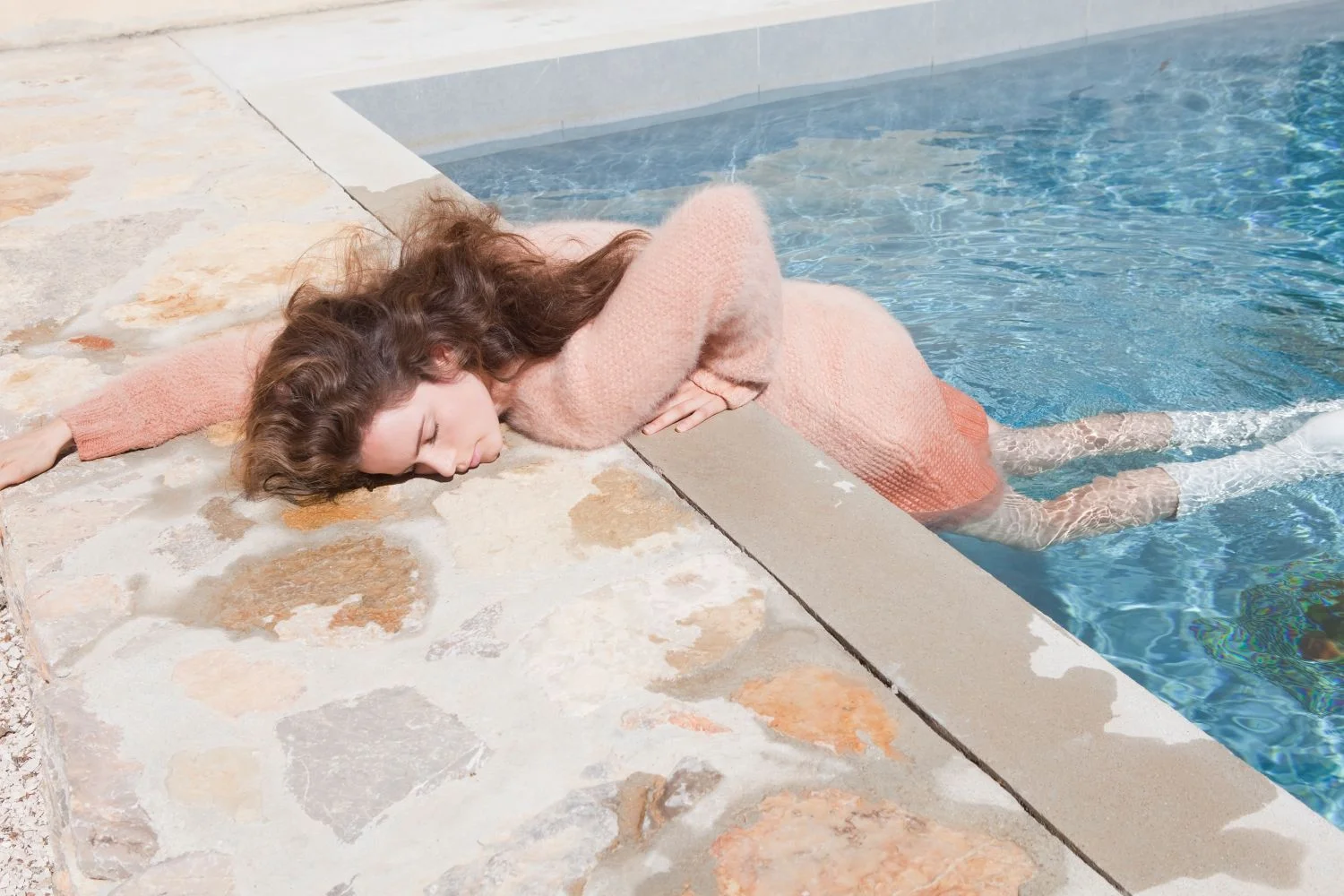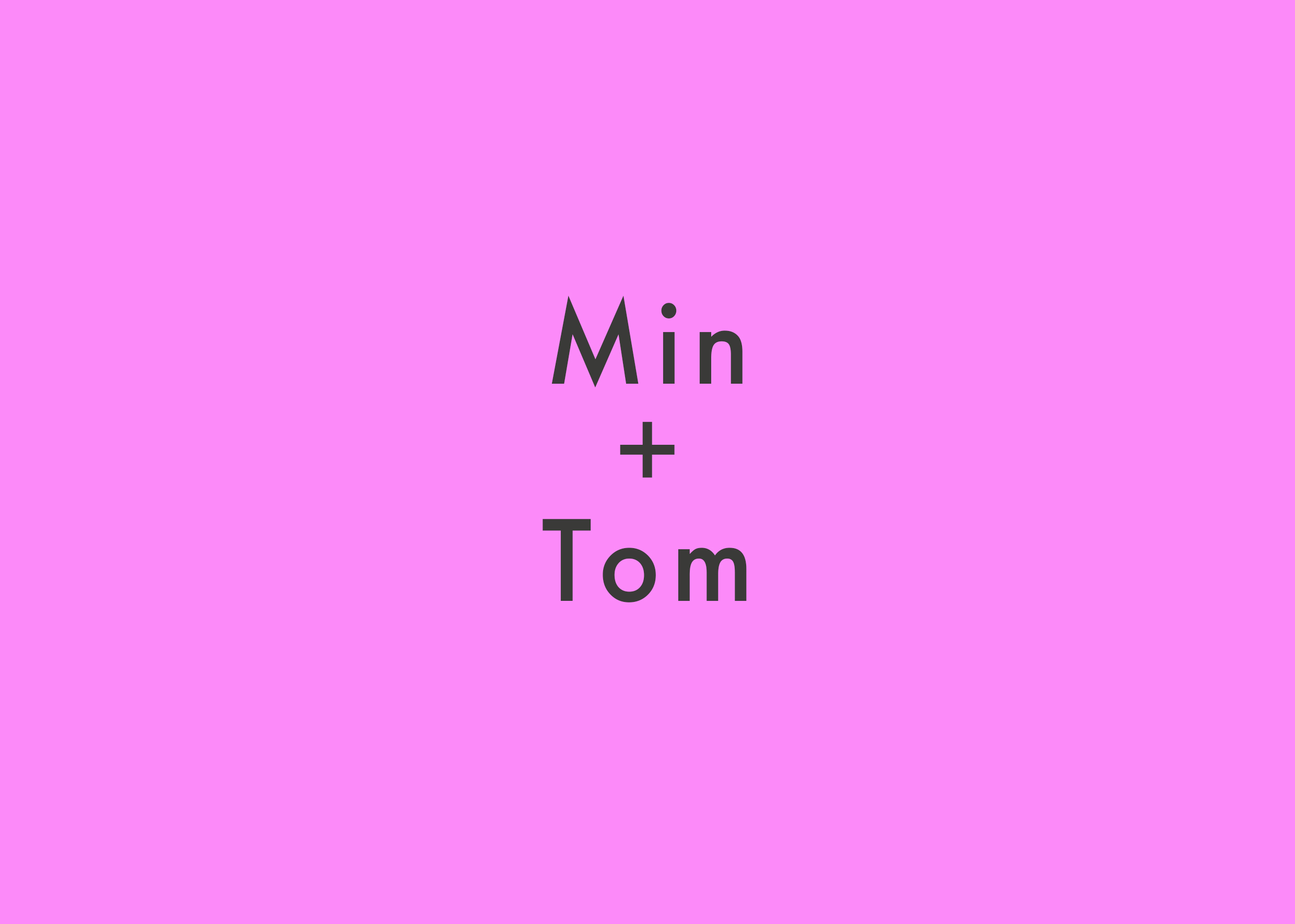
Photography by Viviane Sassen
Marly and Tim met studying architecture when they were 20. Ten years later they were married. “You don’t think about having fertility issues when you’re younger,” Marly tells me. “You just assume that you’ll get pregnant as soon as you start trying.” But in 2005, Tim’s mother was diagnosed with Huntington’s Disease, leaving him and his brother, Ben, with a 50% risk of inheriting the gene, and in turn passing it down to any future offspring.
They tried to ignore it for a few years — because it was too scary to confront – but when Ben decided to get tested, it spurred Tim on to do the same. Ben was free from Huntington’s, but devastatingly Tim carried the gene. “That was probably the most difficult day of my life,” Marly laments. The magnitude of what that result meant in terms of their arduous journey to parenthood, couldn’t even be imagined at that point. And unbeknown, they would become seasoned pros in picking themselves up from a heartbreaking result.
Marly’s a warm, naturally nurturing being. We became friends through a mutual friend, a case of 'you guys need to meet' since Marly’s situation had parallels to my own. She’d crossed the finish line of the journey I couldn’t see the end of. And when we first met, she had her gorgeous, then 3-year-old daughter, Evie, holding her hand – a beaming reassurance that with a bit of grit it was all going to work out. Since that first coffee date, she’s been a constant rock and cheerleader in my own quest to be a mother. And her empathy over our failed IVF rounds has been so real, a reminder of her own experience I’m sure. I knew some of the chapters in a non-linear order, but the full story of what it took to bring Evie into the world, takes grit to a new level.
The hospital that did the Huntington’s test explained the options of starting a family to Marly and Tim. They could try naturally but their child would have a 50/50 risk of carrying the gene. Or they could do IVF with PGD (Pre Genetic Diagnosis). Whereby embryologists take a biopsy of a five-day blastocyst and test it for Huntington’s. Those that don’t have the gene are then viable for transfer. They decided on the latter and applied for NHS funding for IVF with PGD. Case approved, they were given the go ahead for three rounds at Guy’s Hospital in London. Good old NHS.
Age 38, Marly started her first round of IVF with PGD. You feel naively optimistic on the first round, you don’t quite know what’s coming next and just go with the flow. The hope of a baby your north star. But in hindsight, IVF clinics often feel factory-like, and it’s you that’s on the conveyer belt: injections, scans, eggs removed, ICSI (where they inject good-looking sperm into the ovum), eggs fertilised, wait for the three-day blastocyst results phone call from the embryologist, wait for the five-day blastocyst results phone call. And if you’re one of the lucky ones, you’ll have an embryo to transfer. Marly and Tim had two five-day embryos without the Huntington’s gene. So they decided to transfer both at the same time. Double the odds of one of them sticking. After the agonising two-week wait, the result was negative. They weren’t pregnant.
Round two was more successful in that none of the embryos had Huntington’s. They froze one, and transferred two. But again, they got a negative result. They did a natural frozen cycle with the remaining embryo but when it thawed it was 20% damaged, so that didn’t work either. Round three was a disaster from the get go — the consultant put Marly on the highest possible meds and just left her for 10 days without the necessary scans or blood tests, so she completely over stimulated. The nurse doing the scan suggested, off the record, that they should abandon the cycle, seeing as it was their final funded round. That way they would then only incur the costs of the meds they’d need, which was about £800. But the consultant convinced them that it would be fine, and at that stage Marly was invested in those eggs. They managed to get two unaffected embryos to transfer, but nothing came of them. With their NHS-funded rounds over, they were just left asking themselves 'What do we do now?'.
The next logical route was to use a sperm donor, and they looked for other clinics, unhappy with how Guy’s had left them. Having also done three rounds of PGD at Guy’s I completely relate to this. Although they have a great medical reputation, they didn’t offer emotional support or continuity throughout – we were seen by different nurses and consultants on each visit. It’s different if you’re a private patient, you pay for continuity, and we received that in spades when we went privately elsewhere.
Marly and Tim decided on the clinic CRGH, doing sperm donation with IUI (low dose hormones to stimulate the ovaries and what most people refer to as the turkey baster technique). Following some effective implications counselling they went ahead and chose a donor and did four rounds of IUI over consecutive months. Each time unsuccessful. Each time feeling more crushed by disappointment. At this point Marly’s friends were falling pregnant all around her. “It’s really hard to deal with, even when you’re happy for them. And they were all so kind because they knew what we were going through. God, I could cry just thinking about it. I felt like I put everyone else through it as well. Your pregnancy radar is on over-drive when you’re trying desperately to get pregnant. I’d see women pushing a buggy with a baby, a toddler holding on, and an older one walking along. And I’d be like: She’s got THREE!”
“Your pregnancy radar is on over-drive when you’re trying desperately to get pregnant.”
The order of the proceeding attempts to start a family gets a bit hazy at this point, which is understandable given the amount of paths Marly and Tim went down. Their application to adopt at Coram was rejected, based on Tim carrying the Huntington’s gene – even though symptoms may not appear for at least 20 years. The logic seems so utterly crazy because what’s the difference of a family adopting and then one of the parents getting cancer down the line? But Coram’s reasoning was that because they know of the potential risk, they couldn't put a child in that position.
With that door closed, they tried naturally for a year. The thermometer came out each month and ovulation charting and peeing on sticks replaced self-administering hormones. “It was nice to have a break from all the medication but it wasn’t relaxing, my head was still in the state of don’t drink caffeine, don’t drink wine, don’t do this, or must do more of this. If your body’s not in a relaxed state it’s not going to work.” And it didn’t. Something they now look back on and are happy about given the high risk of the baby inheriting the HD gene. And crucially, because they wouldn’t have Evie if it had.
Your goal posts shift when you’re desperate for a baby. What at one point feels like a route you feel so uncomfortable with, then becomes a possibility. Marly and Tim found themselves back at Guy’s doing a private round of IVF with PGD. This time being able to call the shots a bit more and have frequent monitoring while Marly was taking the stimulation medication. They had two HD-free five-day blastocysts. Transferred them both and got their first ever positive pregnancy test after four years of negative, negative, negative. But after a couple of blood tests showed the hormones were dipping, it was obvious they had lost the pregnancy.
Marly reminisces back to that time, the exhaustion and heartache only too familiar. “I was a mess. I just gave up. I couldn’t do it anymore, put us through all of that anymore.” It was her mum who then encouraged her to not give up but to go down a different path. She suggested they go to Cyprus and get a double donor. Marly’s family is Cypriot and they still have a family home there. Rather than going to the US or Spain, where people tend to go for egg donors, Cyprus would mean they would be able to use Cypriot donors, be in a familiar place and be able to speak the language.
“Is the genetic link the most important thing to you? However they are made, they will be completely yours.”
They read up about a local clinic and particular consultant who had trained and worked in London as an embryologist doing PGD procedures. He was accomplished and straight talking. With Marly now 42, they decided to use an egg donor. Donor profiles are closed in Cyprus so you don’t get detailed specifics. It’s fairly dry information like height, weight, eye and hair colour, occupation, hobbies, what they’ve been tested for, maternal height, paternal height. “Initially I was hung up on height, wanting to find a donor who was 5ft like me, but we went with someone taller because finding someone with Cypriot heritage was more important.” Determined to have one biological link to their child, they used Tim’s sperm and did PGD for one last time. They had one embryo to transfer, but it didn’t stick.
Listening to Marly’s journey, it’s amazing how she talks about their failed rounds with such honesty and strength, when I know how much you have to invest physically, emotionally and financially – both during the treatment, and in the aftermath when you’re grappling with crushing disappointment. But going through what they’ve done earns you a whole lot of humility. You don’t think that making a baby is about having bucket loads of tenacity, an iron-strong relationship and the funds to enable you to keep on going. But luckily Marly and Tim dug deep, to have all three.
After four rounds of IVF with PGD, four rounds of IUI using a sperm donor, a rejected adoption application, one round of soft IVF (milder stimulation doses) with a sperm donor, and one round of egg donor with PGD, their final attempt doing IVF using a double donor in Cyprus, worked. Marly and Tim had their daughter, Evie.
“Let’s just try one more time”
What differed in their successful attempt was a combination of things, Marly reflects. They had made peace with not having a genetic connection to their child. And more importantly, with not having children at all. The pressure was off. She was focused on doing the renovation drawings on their house, rather than obsessing over body temperature or follicles. And there’s a lot to be said about that mental shift away from it all. She was happy with her life; they had each other and many good things to be distracted by. They chose the same egg donor, selected a sperm donor and went out to Cyprus, like they did most years for holiday, but this time had an embryo transfer. And this time it worked.
Marly confesses that while pregnant she did worry that she wouldn’t know who her baby was, but that all went out of the window when Evie was born. “She has these deep, deep blue eyes, straight blonde hair and long legs. She doesn’t look Cypriot in anyway. She actually has Tim’s fair colourings. But I know for a fact that Evie is our daughter, she reflects back what we say, our mannerisms. Genetics don’t make you a family. Love does. Evie’s ours, she’s just so precious, so beautiful, so amazing.”
The clinic in Crypus is called Genesis. The consultant’s name is Savvas Koundouros. www.genesis-cy.com/genesis-cyprus-ivf-clinic/









